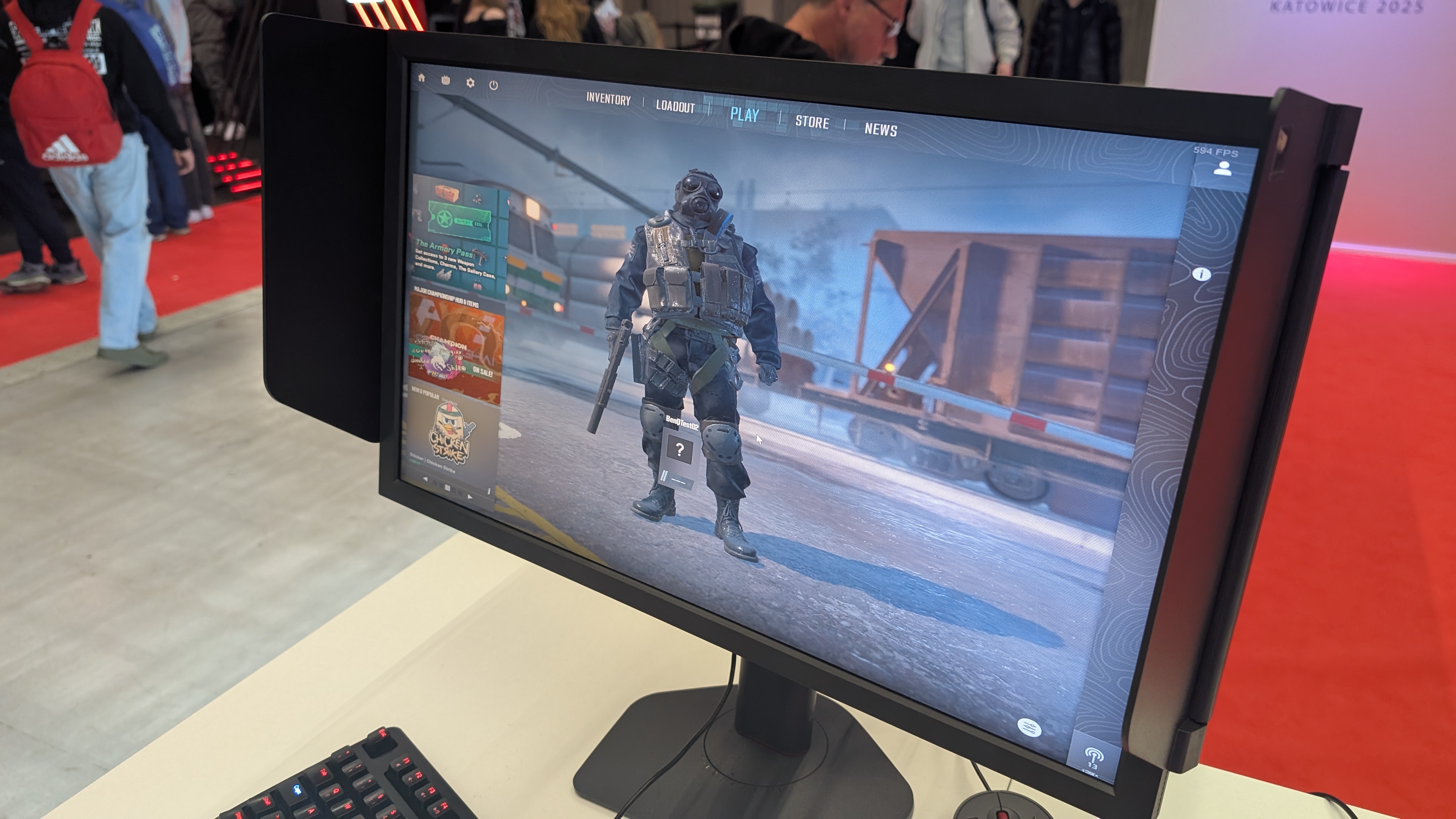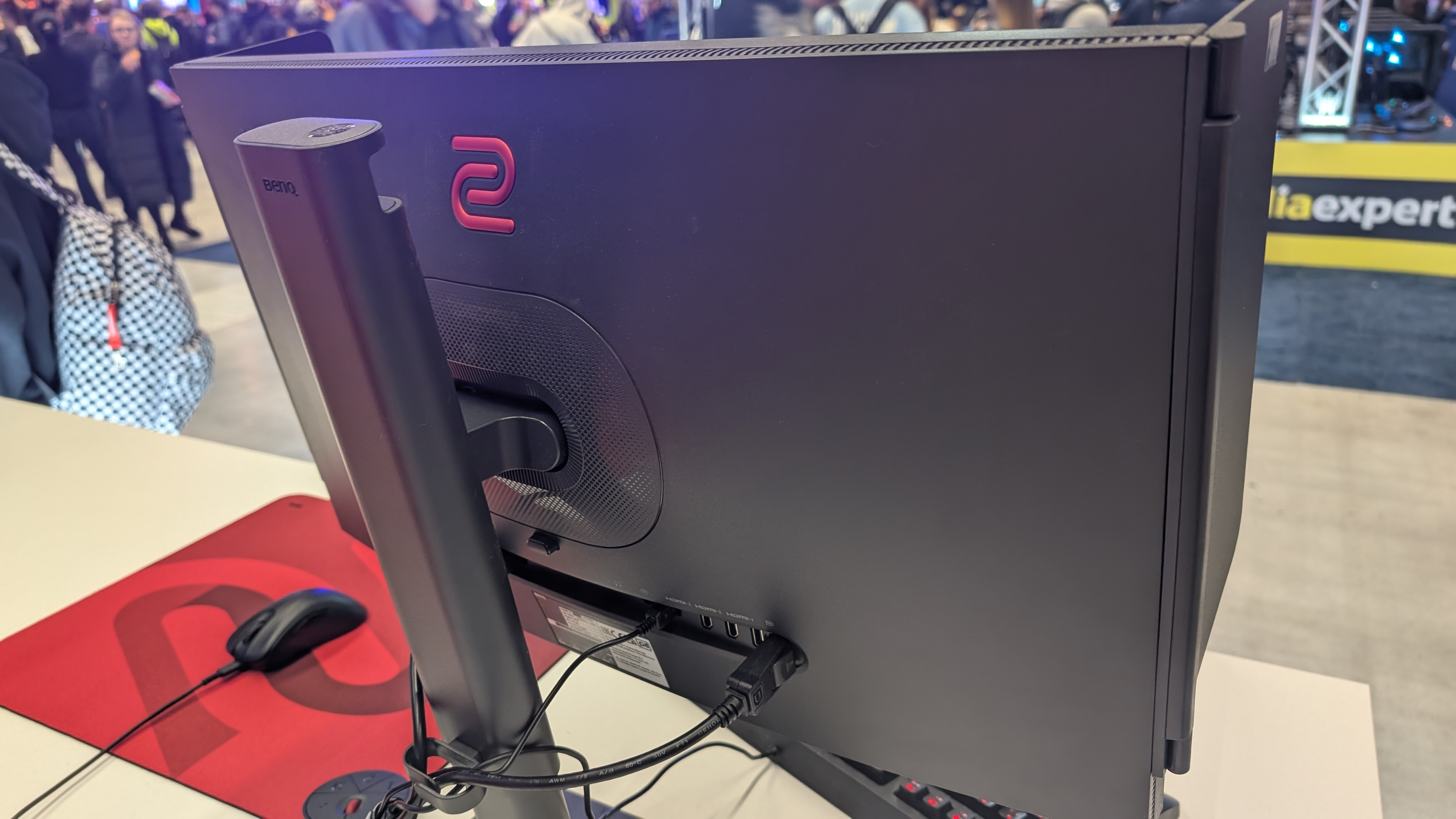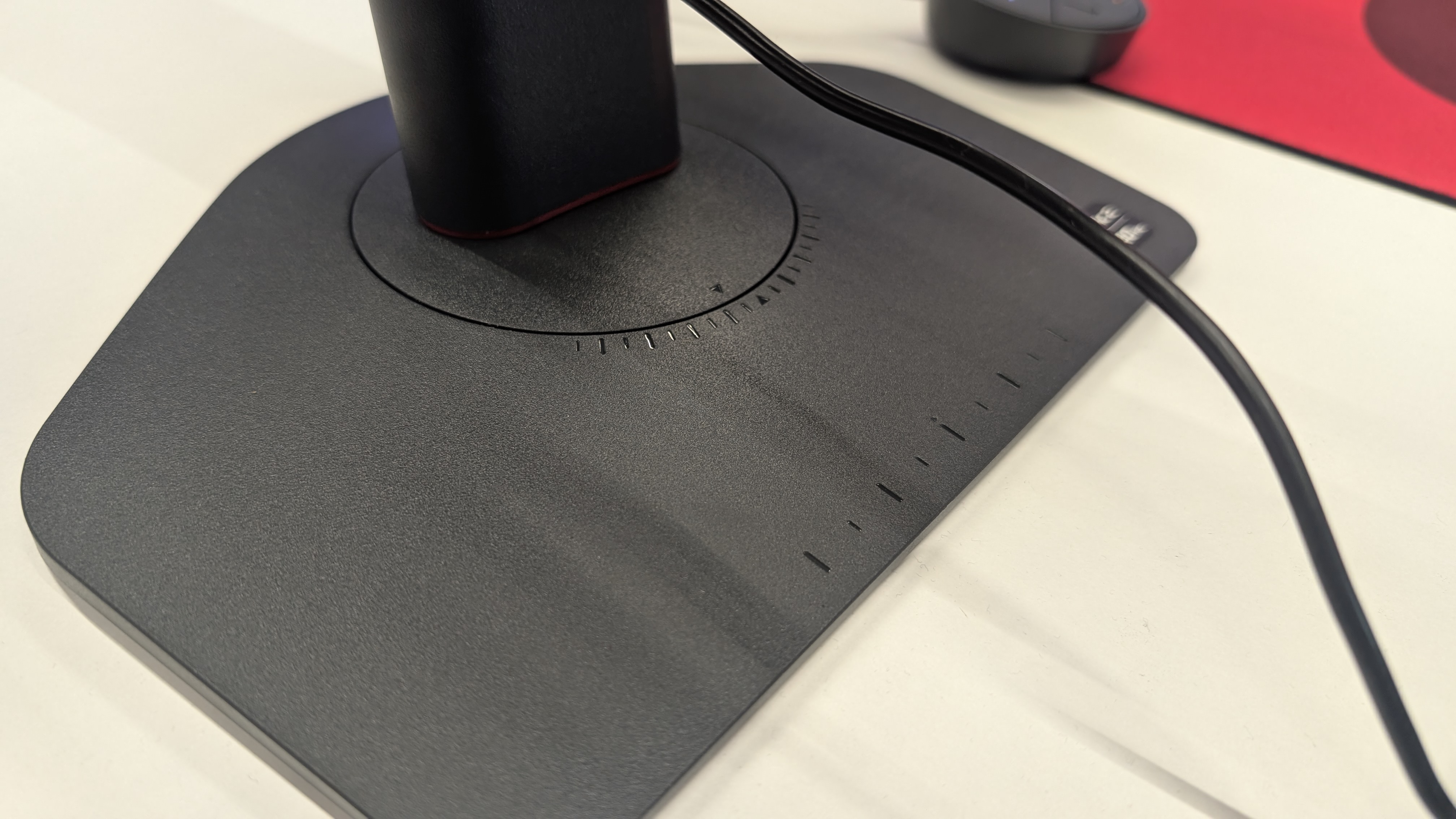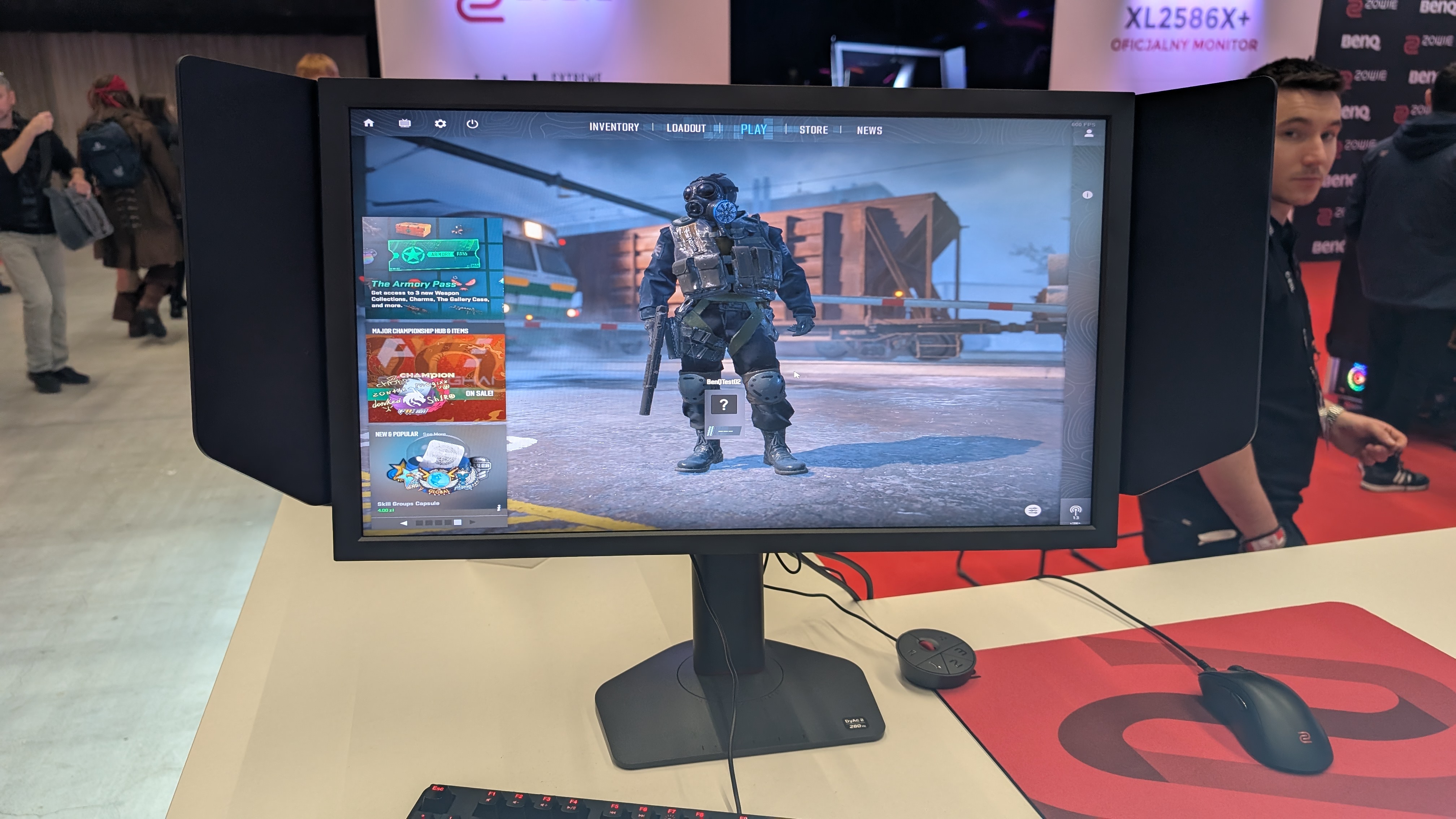I used a 600Hz esports monitor, but it didn't make me any less terrible at Counter-Strike
It's a great display, but it didn't help my skills

The Intel Extreme Masters in Katowice, Poland is the prototypical esports event: massive screens replaying crisp headshots, a huge arena with a screaming crowd, and (presumably) a few hundred thousand Polish złoty worth of on-stage pyrotechnics. But I wasn't there for the love of the game: I was there for the hardware.
As exciting as watching IEM’s Counter-Strike 2 pros go head-to-head is – and even as someone who has historically been pretty ambivalent about esports in general, it is genuinely exciting to watch live – my focus was on the kit those competitors were using. In order to prevent any unfair advantages, the players must compete on standardized displays, and in the case of IEM Katowice, the official monitor of the event is the Zowie XL2586X+.

Zowie is actually a brand owned by well-known monitor maker BenQ, with a focus specifically on hardware for competitive gaming. The XL2586X+ lives up to this idealogy and then some, with a rich feature set geared explicitly towards esports professionals (and hopefuls). The main draw is, unsurprisingly, the ridiculous 600Hz refresh rate. In twitchy shooters like CS2 and Valorant, where framerates and latency can often be the difference between securing a win and an AWP shot to the face, high-refresh-rate monitors are considered standard equipment – but 600Hz is truly nutty, virtually guaranteeing that your display will never hold back your framerates.
Smooth as silk
Refresh rates alone do not an esports monitor make, however. The Zowie team has packed the XL2586X+ with other nifty features beneficial to competitive gamers, like side-mounted shielding to minimize distractions (and potentially also deter screen-peeking), a fully rotatable and height-adjustable mount, and a physical Zowie ‘S-Switch’ – essentially a small control panel for the monitor that lets you switch between preset display modes at the tap of a button.
Most intriguing to me, though, was the actual screen itself. While gaming monitors targeting the esports space often forgo higher resolutions and fancy panel types like OLED or Mini-LED (the XL2586X+ ostensibly just uses a 1080p LCD panel) in favor of maximizing refresh rate and sharpness, this monitor using something called a ‘Fast TN’ panel. I had literally never heard of this, so I had to investigate.

Turns out, ‘Fast TN’ is a bit of clever branding by BenQ, but it's not without merit. ‘TN’ stands for ‘twisted nematic’, and while I'm not going to get into the real nitty-gritty of how that works here, I'll simplify it by saying that it's basically a different type of internal liquid crystal structure to the more common IPS and VA panel types. TN panels typically provide poorer contrast and color vividity, but superior response time - the most crucial feature for esports displays. Even at the same refresh rate, IPS or VA panels can produce more visual noise (blurring, essentially) when trying to display fast-moving objects, while TN screens retain more sharpness, an advantage that Zowie hopes will help make high-level players more accurate.
The Fast TN panel type is a TN panel that has been customized by BenQ to produce better color vibrance and contrast without sacrificing those response time benefits, as well as delivering Zowie’s ‘DyAc 2’ technology, which is shorthand for ‘Dynamic Accuracy’. As the name suggests, this technology (which specifically alters the backlighting of individual pixels) works to improve image accuracy by further reducing screen shake and motion blur. In other words, the XL2586X+ is far more than a humble LCD monitor.
Get daily insight, inspiration and deals in your inbox
Sign up for breaking news, reviews, opinion, top tech deals, and more.
Playing at 600Hz
Naturally, when I got the chance to jump into a game of Counter-Strike 2 on the Zowie XL2586X+, I seized the opportunity. This could be my big break, I thought. I could finally be good at Counter-Strike, a game that has baffled me for years. Every gamer is just a temporarily embarrassed esports champion, after all.
Needless to say, I won’t be competing at IEM any time soon. I still suck at CS2, and I doubt this monitor would make me any better at similar FPS titles like Valorant and Rainbow Six Siege (I’m more of a card-based roguelike kind of guy). Even just in a regular deathmatch game against other attendees, I barely managed to scrape a meager single-digit kill count.

I can’t deny that the Fast TN panel works, though. Even at 1080p, everything was fantastically sharp and smooth, colors were vibrant, and I couldn’t detect even the slightest bit of motion blur or after-imaging even in the fiercest of short-lived gunfights on the XL2586X+. For a Counter-Strike pro, playing on this monitor versus using a bog-standard 60Hz or even 120Hz display must be a revelation.
So while I don’t think the official monitor of IEM Katowice is going to turn a Counter-Strike klutz like me into an expert head-clicker, I have a newfound appreciation for esports hardware, and I do feel confident saying that any serious budding pro should consider investing in a monitor like Zowie’s 600Hz monster.
You might also like...

Christian is TechRadar’s UK-based Computing Editor. He came to us from Maximum PC magazine, where he fell in love with computer hardware and building PCs. He was a regular fixture amongst our freelance review team before making the jump to TechRadar, and can usually be found drooling over the latest high-end graphics card or gaming laptop before looking at his bank account balance and crying.
Christian is a keen campaigner for LGBTQ+ rights and the owner of a charming rescue dog named Lucy, having adopted her after he beat cancer in 2021. She keeps him fit and healthy through a combination of face-licking and long walks, and only occasionally barks at him to demand treats when he’s trying to work from home.
You must confirm your public display name before commenting
Please logout and then login again, you will then be prompted to enter your display name.